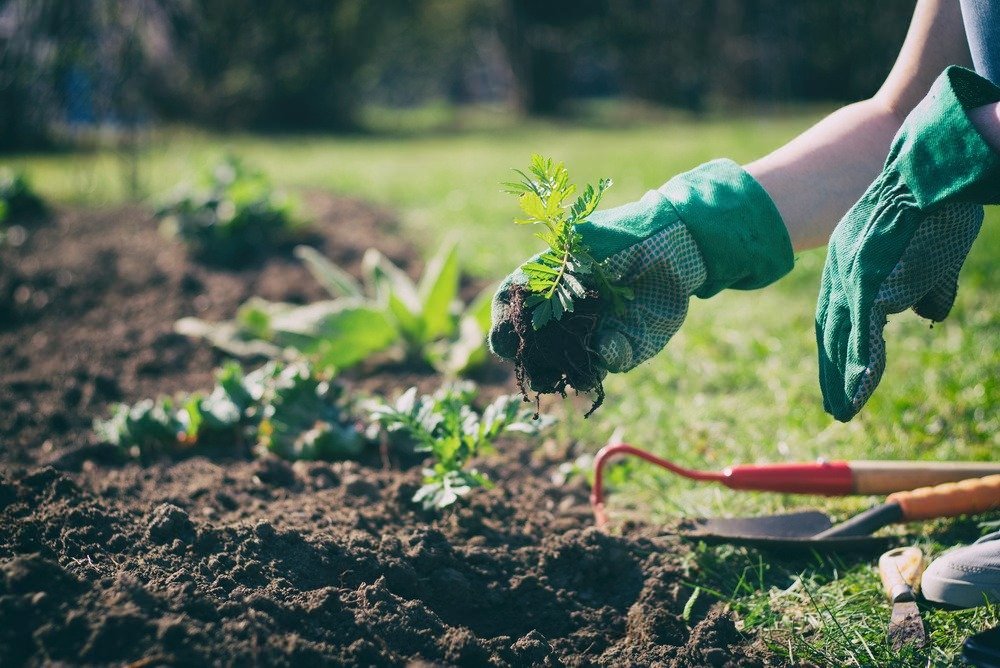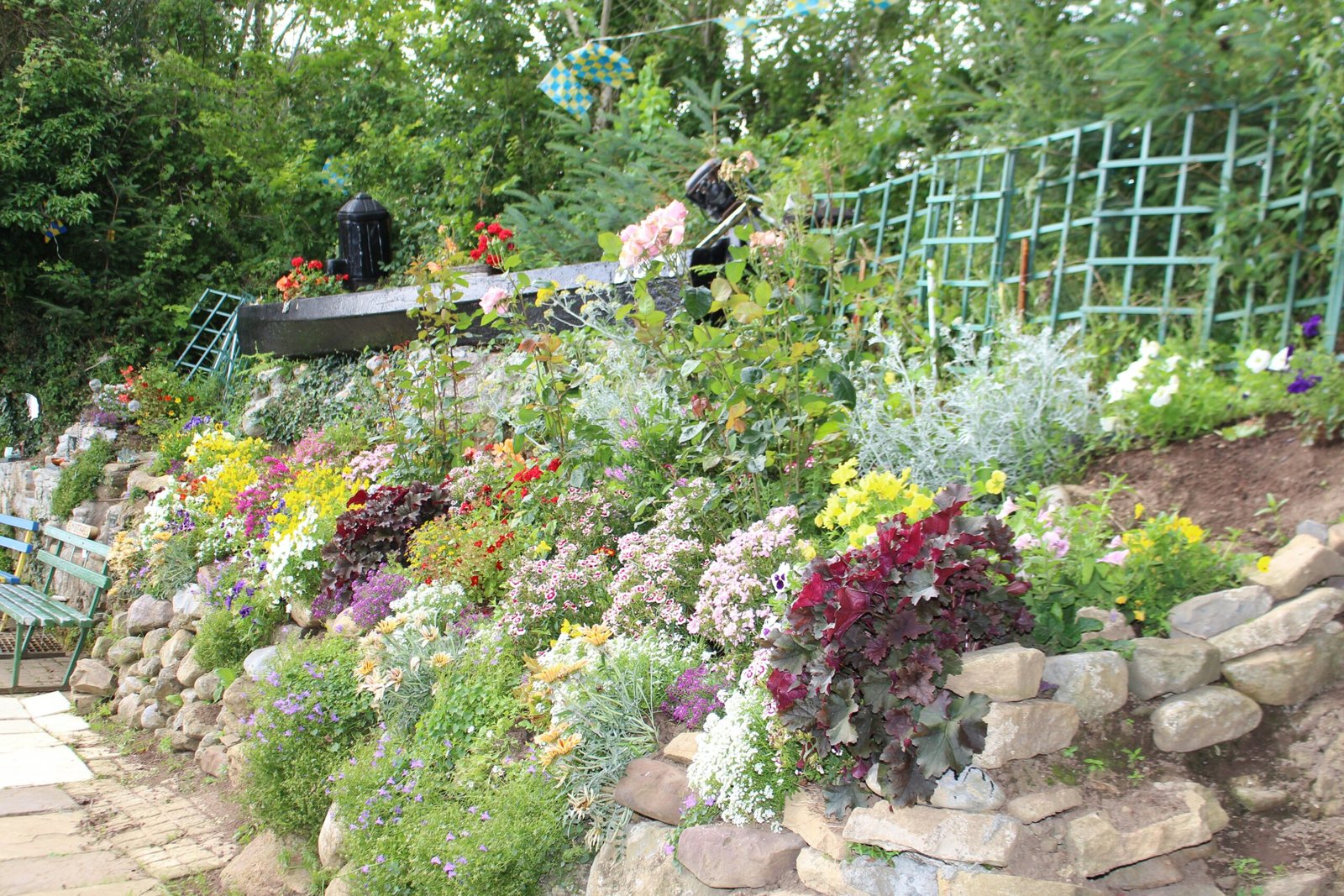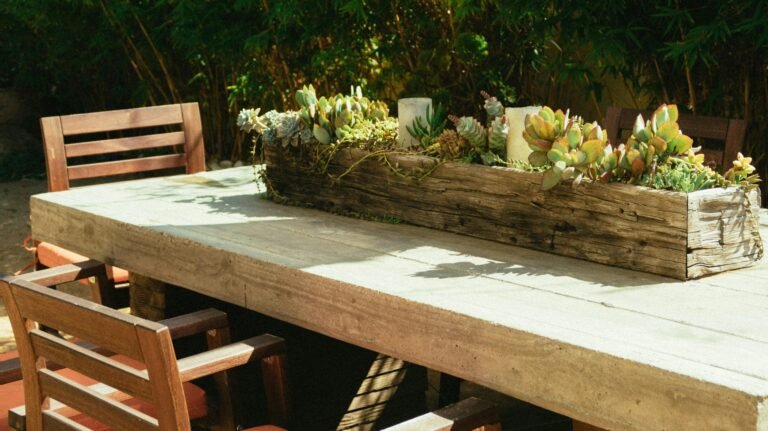When I first started gardening, I used to think success depended mostly on having the right plants. But over the years, I’ve learned that seasonal garden planning — not just plant choice — is what truly transforms a garden into a thriving, year-round sanctuary. Each season brings its own rhythm, and knowing what to do (and when) keeps your garden healthy, productive, and beautiful no matter the weather.
Why Timing Matters
Timing in gardening is everything. Different regions and climate zones have unique planting windows, frost dates, and rainfall patterns that affect when to sow, prune, or harvest. For example, USDA Hardiness Zones help identify what plants can survive your winters, while microclimates in your yard — such as sunny slopes or shaded corners — can change what grows best.
By aligning your seasonal work with nature’s cycles, you’ll avoid common pitfalls like planting too early or skipping crucial soil care before the growing season begins.
How I Plan a Year-Round Garden
My personal approach starts with a simple garden calendar. I map out every season’s key tasks — from spring garden checklists to winter garden care routines — and note expected weather patterns. Tools like The Old Farmer’s Almanac or Garden.org offer regional planting guides that I use to fine-tune my plan.
I also recommend keeping a lightweight garden journal. A few notes about what worked (and what didn’t) this year make planning next season effortless. Whether you’re growing vegetables, flowers, or perennials, a good plan keeps your garden not just alive but flourishing all year long.
Spring Seasonal Garden Planning: Start Strong
Spring is when the garden truly wakes up and if you plan wisely, you’ll set the foundation for success the rest of the year. After months of dormancy, your soil, plants, and tools all need attention. In my experience, how you start in spring often determines how smoothly the rest of your gardening year unfolds.
Soil Wake-Up: Testing, Amending, Mulching
Before you plant anything, give your soil some love. A quick soil test reveals the pH balance and nutrient levels, helping you decide what amendments are needed. Compost or aged manure adds organic matter, while lime or sulfur can correct pH imbalances.
Once enriched, cover beds with a light layer of mulch to regulate temperature and moisture. Early mulching also suppresses weeds before they take hold, one of the easiest time-savers for spring.
For reliable soil testing kits and region-specific advice, your local cooperative extension office is a great resource. I use their recommendations to fine-tune my compost mix and nutrient ratios.
New to making your own soil food? Start here: How to Start a Compost Bin: Easy Composting for Beginners.
Spring Garden Checklist: Sowing, Transplanting, Pruning
This is when the spring garden checklist becomes your best friend. Key tasks include:
- Sow cool-season crops such as lettuce, peas, and spinach as soon as the soil is workable.
- Transplant seedlings after the last frost date.
- Prune shrubs and perennials to encourage healthy new growth.
- Check irrigation systems to ensure hoses and drip lines are clear.
Keeping up with these essentials ensures your plants start strong and stay productive through summer.
Pest & Disease Prevention Early in the Season
Spring is the best time to get ahead of pests and diseases. Clean old debris where insects may overwinter, and inspect leaves regularly for early signs of damage. I also use natural deterrents like neem oil or insecticidal soap rather than harsh chemicals. Rotating crops annually and spacing plants properly keeps airflow high — another simple but effective disease prevention strategy.
🌱 Pro Tip: Create a “spring prep bin” with gloves, pruning shears, and compost tools so you’re ready whenever the weather turns nice. A little organization makes a big difference during this busy season.
Build a gentle, effective IPM routine with Natural Pest Control for Gardens: Proven Organic Solutions That Work.
Summer Garden Maintenance Essentials
By the time summer arrives, your garden has come alive — but the heat and long days also bring new challenges. Summer garden maintenance is all about consistency: watering wisely, feeding regularly, and protecting your plants from stress. This is the season when a bit of attentive care keeps everything lush and productive.

Watering Strategy: Deep vs. Frequent; Mulch Management
Hot weather often tempts gardeners to water daily, but shallow watering does more harm than good. Instead, water deeply and less frequently to encourage deep root growth. Early mornings are ideal — you’ll minimize evaporation and reduce the risk of fungal issues.
Mulch remains your best ally in summer. Refresh the layer you placed in spring to retain soil moisture and regulate temperature. I often use straw or shredded bark, which breaks down slowly and looks neat. For container plants, adding water-retaining crystals or moving pots to partial shade can make a huge difference.
Summer Garden Maintenance: Feeding, Staking, Deadheading
Your plants are working hard now, so feed them regularly. A balanced organic fertilizer or compost tea every few weeks helps sustain growth. Keep tall plants — like tomatoes and dahlias — supported with stakes or cages to prevent breakage.
And don’t forget deadheading (removing spent blooms). It encourages continuous flowering and keeps your beds looking tidy. I find it relaxing to do this in the evening when temperatures drop — it’s also a good time to check for pests like aphids or whiteflies.
Harvest, Succession Planting, and Shade Solutions
Frequent harvesting not only rewards you with fresh produce but also stimulates new growth. For example, picking beans or zucchinis regularly prevents plants from going dormant. To extend productivity, consider succession planting — sowing new seeds every few weeks ensures a steady harvest.
If your region experiences intense sun, install shade cloths or use taller crops to provide natural protection for delicate plants. These simple adjustments help avoid heat stress and keep soil moisture levels balanced.
☀️ Quick Checklist for Summer Care:
- Deep water 1–2 times weekly
- Reapply mulch where needed
- Feed every 3–4 weeks
- Harvest frequently
- Monitor pests & adjust shade
Fall Garden Prep for Next Year’s Success
As the days grow shorter and temperatures start to drop, it’s time to transition from peak growth to preparation. Fall garden prep isn’t just about cleaning up, it’s about setting the stage for healthier, stronger plants next spring. I like to think of this season as a gardener’s “reset button.”
Fall Garden Prep: Clean-Up, Composting, and Soil Building
Start by clearing away spent annuals, diseased leaves, and any debris that could harbor pests over winter. Composting this organic matter — except diseased plants — turns waste into valuable soil food. A well-managed compost pile heats up naturally, killing pathogens and creating nutrient-rich humus for spring.
Once beds are cleared, it’s the perfect time to build soil. Spread a layer of compost or well-rotted manure and gently work it into the top few inches. You can also sow cover crops (like clover, rye, or vetch) to protect soil from erosion and add nitrogen. According to University of Minnesota Extension, cover crops improve long-term fertility and structure — an easy win for sustainable gardening.
Dividing Perennials and Planting Bulbs
Fall is ideal for dividing perennials such as hostas, daylilies, and irises. Doing so revitalizes old plants and gives you more to plant elsewhere. Dig up the clumps carefully, separate them, and replant immediately.
At the same time, plant spring-flowering bulbs like tulips, daffodils, and crocuses before the first frost. A few hours of work now means a vibrant garden early next year.
Protecting Beds and Planning Crop Rotation
Once planting is done, protect your garden beds. A thick mulch layer or even fallen leaves can insulate the soil, prevent weed growth, and keep beneficial microbes active.
This is also when I plan next year’s crop rotation. By rotating plant families (for example, moving tomatoes away from last year’s bed), you reduce disease buildup and nutrient depletion. Sketching out a quick bed plan in your garden journal will save you time come spring.
🍂 Autumn Tip: Don’t rush to tidy every corner, leave some seed heads for birds and beneficial insects. A slightly “messy” garden in fall often supports better biodiversity.
Winter Garden Care & Off-Season Wins
Winter may seem like the garden’s quiet season, but it’s far from idle time. This is when I focus on reflection, protection, and preparation — the unseen work that ensures a thriving garden when spring returns. With smart winter garden care, you can safeguard your plants and sharpen your gardening strategy for the year ahead.

Protecting Plants: Covers, Wrapping, Container Care
Cold, wind, and frost can take a toll on exposed plants. Start by covering tender perennials and shrubs with burlap or frost cloths — never plastic, which traps moisture. I often use straw or evergreen boughs as natural insulation around plant bases. For container plants, move pots close to walls or indoors if possible, as roots are especially vulnerable in winter.
If you have raised beds, covering them with plastic tunnels or row covers can extend the growing season for hardy greens like kale or spinach. Simple structures like these can keep soil workable and provide fresh harvests even in colder months.
Tool Care, Seed Inventory, and Ordering
Winter is also maintenance season. Clean and sharpen your garden tools before storing them to prevent rust and prolong their lifespan. I wipe mine with linseed oil after cleaning — a trick I learned from my grandfather.
Next, take inventory of your seeds. Discard expired ones, organize packets by planting season, and start planning what to order for spring. Reliable seed companies like Johnny’s Selected Seeds or Baker Creek Heirloom Seeds offer high-quality, regionally tested varieties.
Designing Beds and Mapping Next Season
Winter is when creativity blooms. Use this slower pace to sketch new garden layouts, experiment with companion planting ideas, or research native species that attract pollinators. I enjoy using digital tools like Garden Planner to visualize crop rotations and seasonal transitions.
Reflect on what thrived last year and what struggled. Small tweaks — adjusting plant spacing, changing mulch types, or adding drip irrigation — can lead to big improvements next season.
❄️ Winter To-Do List:
- Protect sensitive plants and containers
- Sharpen and oil tools
- Organize seeds and place orders early
- Draft next year’s garden design
Year-Round Scheduling & Seasonal Garden Planning Toolkit
Once you’ve experienced a full gardening year, you start to see how everything connects – spring prep leads to summer abundance, fall care ensures winter rest, and so on. To make the most of your time and effort, a year-round scheduling system keeps your garden on track no matter what the weather brings.
Zone-Based Calendars and Reminders
Every region has its own rhythm. Using your USDA Hardiness Zone (or an equivalent if you’re outside the U.S.) helps you align planting and maintenance tasks with your local climate. I keep a monthly garden calendar with key reminders: when to sow seeds, fertilize, prune, or harvest.
Online tools like PlantMaps.com let you view your frost dates, while apps such as Gardenate or From Seed to Spoon send notifications customized to your region — perfect for busy gardeners.
If you prefer analog tools, print a wall calendar and color-code it: green for planting, blue for watering, brown for composting. Seeing it at a glance makes planning both practical and motivating.
For tougher, lower-maintenance planting across seasons, explore Why Native Plants Belong in Your Garden (And the Best Ones to Grow).
Essential Tools, Apps, and Simple Record-Keeping
A smooth gardening year depends on organization. My essentials include:
- A sturdy garden planner notebook or app
- A label maker or waterproof tags for seedlings
- A few digital tools for reminders and mapping
Apps like Tended or Garden Journal help track growth patterns, harvest dates, and weather conditions. Pairing digital notes with simple physical records (like sketches or photos) gives you both precision and creativity.
Maintaining a yearly “snapshot” — even just a page summarizing what worked and what didn’t — helps refine your approach. Over time, these small notes become your most valuable gardening guide.
Budgeting Time and Costs Across the Seasons
Gardening can easily stretch your budget and your energy if you don’t pace yourself. I like to divide the year into small “budget bursts”: seed purchasing in late winter, compost and soil amendments in spring, and mulch or tools in summer sales.
Setting a modest seasonal budget — even $50–100 per quarter — keeps expenses predictable and prevents those last-minute store runs. The same logic applies to your time. Instead of marathon weekends, schedule short, consistent sessions. A few focused hours each week will keep your garden flourishing without burnout.
🗓️ Toolkit Summary:
- Zone-based calendar & frost-date tracker
- Garden journal or app
- Seed inventory spreadsheet
- Seasonal time & cost budget
Conclusion
After years of gardening through every season, I’ve learned that success doesn’t come from perfection, it comes from rhythm. Seasonal garden planning teaches you to listen to nature’s cues, anticipate changes, and work with the seasons rather than against them. Each stage — from spring’s burst of growth to winter’s quiet rest — plays a vital role in sustaining a healthy, balanced garden.
Reflecting on my own journey, I’ve found that the more intentional I am about planning, the less stressful and more rewarding each year becomes. A good plan turns chores into rituals — watering becomes a moment of calm, pruning a way to refresh, and composting a gesture of renewal.
Now it’s your turn. Start small: mark your planting dates, sketch your first layout, or draft a checklist for the coming season. Whether you grow herbs on a balcony or manage a full backyard oasis, thoughtful planning brings joy, beauty, and abundance to every corner of your space.
Alex is the creator of Homely Haven, a space dedicated to simple, stylish ideas for interiors and gardens alike. With a passion for cozy living rooms, inviting outdoor spaces, and practical DIY solutions, Alex shares tips and guides that help turn any house into a true home.
From budget-friendly decorating hacks to weekend garden projects, the goal is always the same: to inspire you to create spaces that feel personal, beautiful, and welcoming. When not writing, Alex is usually rearranging furniture, sketching new garden layouts, or exploring design trends for the next project.








